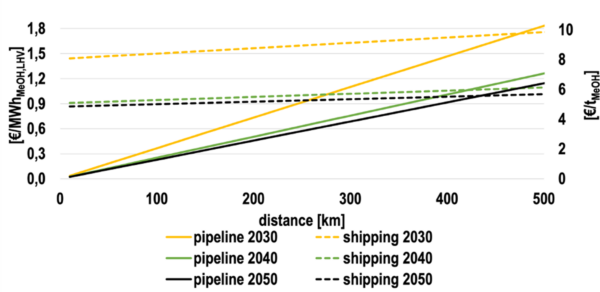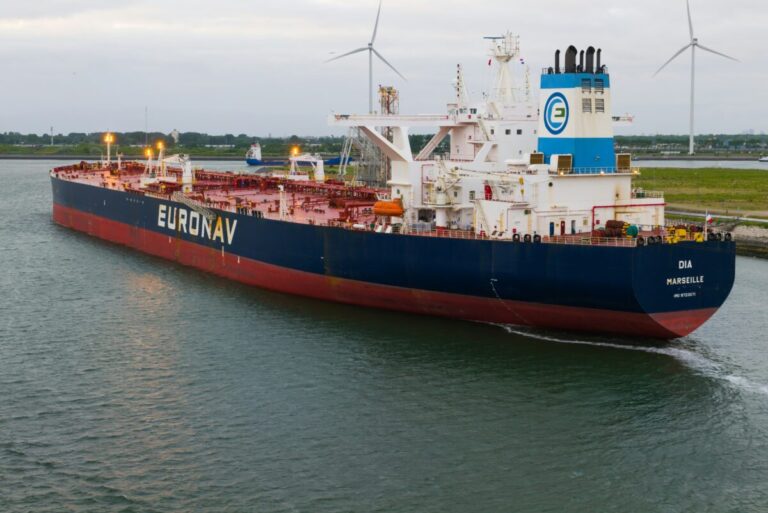Hard to keep segments in the energy transition, such as the chemical industry and marine transport, require in large quantities of electricity-based e-methanol. The transport costs can be a key factor in determining the best locations for future green e-methanol projects.
As the world reduces the efforts to reduce greenhouse gas emissions, intensify and renew renewable energy, the industry and long -distance transport are examined. Green e-methanol appears as a promising alternative fuel and chemical, especially for long-distance shipping and the chemical industry. Although raw materials and production costs often dominate discussions, an important factor – transport and storage infrastructure – are often overlooked. New research Van de Lut University assesses the costs of transporting e-methanol from solar-rich regions such as Morocco and Chile to energy-saving European countries such as Germany, Finland and Spain, and offers insight into the competitiveness of import versus local production.
The study entitled “Analysis of green e-methanol supply costs: domestic production in Europe versus import via pipeline and sea shipping“Investments the production costs of e-methanol in different regions, which reveals significant differences. In Germany and Finland the production costs are considerably higher than in Spain, Morocco and Chile. The primary reason for inequality is the availability of high -quality sun sources, which make lower costs for generating electricity in the south, while in the coming years until the sites of the 1920s will remain competitive with very good wind energy sources. By 2050 the production costs of e-methanol in all regions decrease, but the gap will broaden as the solar PV costs fall faster than in comparison with wind energy. Projections Suggesting that by 2050 e-methanol could be produced for only € 50-55 ($ 51.5-56.7)/MWH (€ 279-308/TMEOH) at optimum locations such as North Chili, Morrocco and Spain.
Image: Lut University
The research offers a detailed analysis of transport costs for green E-Methanol imports to Europe from 2030 to 2050, whereby pipeline and shipping options are compared. Pipelines are cost-effective for distances up to 420-475 km, but after this reach, shipping becomes an economic choice. For example, sending e-methanol of more than 1000 km can cost approximately € 2.1/MWh (€ 12/TMeoh), while pipeline costs can reach € 3.6/MWh (€ 20/TMeoh) over the same distance.

Image: Lut University
By 2030, the import of E-Methanol from Morocco to Europe could cost € 113-208/MWH (€ 631-1161/TMeoh), while imports from Chile can be somewhat cheaper at € 106-165/MWH (€ 592-921/TMeoh). Over time, the import costs are expected to fall considerably. The study suggests that domestic production in Germany and Finland-based on a mix of solar and wind energy-durmer than imports from solar-rich regions. The excellent solar potential of Spain makes local production very competitive. With the costs of solar PV that continue to fall, the import of e-methanol from solar-rich regions to Central and Northern Europe can produce considerable savings up to 22% for Germany and up to 37% for Finland. Previous studies have also shown that many countries in the Sunbelt region can opt for export or self-supply of e-methanol, while Canada, many parts of Europe and Eurasia are likely to import.
A challenge in the production of green e-methanol is to secure a sustainable co2 source. This study assumes Availability of large -scale CO2 Direct air shelter (DAC) Units and projected reduction of their investment costs. However, Some regions can have access to more cost -effective CO2 Sources from sustainable and inevitable point sources from Co2Such as pulp and paper factories, cement plants and waste burns. This study is investigating the potential benefits of using bio-co2 taken prisoner of the Pulp and Paper industry of Finland instead of DAC-Dedicated CO2. This approach could reduce production costs by 7-14% and make domestic production more attractive in the short term. In the long term, however, import from Morocco and Chile can still remain the most cost-effective option because of their low electricity costs for solar energy.
Nevertheless access to available BIO-KO2 May Finland place in a favorable position to become an E-Methanol exporter, even though it is not a tanning country. This competitive advantage is based on the lower cost wind in the earlier periods with higher full load hours, because this opens an opportunity for opportunities for Competitive green e-methanol of the Noordics, while infrastructure challenges are manageable to link the bio-co sites2 And the windy regions. On top of this advantage in having co2 As a raw material, Finland has together with Spain Available land surface With a potential of a maximum of 1000 TWH of wind-based electricity and can therefore offer solutions to European partners for achieving high energy-sovereignty in Europe in a world of increasing international geopolitical tensions.
The findings correspond to a Previous study About Green E-Amammonia Trading, which also benefits from relatively low transport costs. On the other hand, hydrogen transport Remains considerably more expensive due to the need for hydrogen slexal action or very high compression rates. The complexities and costs associated with hydrogen handling Together with other insights from transitional studies of the energy system, questions raise about the feasibility of the concept of a hydrogen economy.
Instead of, Methanol’s versatility and the potential to be converted into gasoline, dimethyl ether and various bulk chemicals, it positions it as a more important energy rider, making the methanoleconomy a more suitable term within the broader concept of the Power-to-x-economy. The most important energy carriers in future energy systems will be electricity, hydrogen and methanol, while the majority of hydrogen will be used as an intermediate energy carrier to produce methanol, kerosene beam fuel and ammonia. The steel industry can be one of the biggest direct segments of the demand for hydrogen with some Further last demand for hydrogen In the industry.
In the future, whether a country imports, exports or becomes self-sufficient in its E-Methanol offer, will largely depend on the costs of renewable electricity. This will probably prefer sunny regions and position them as important suppliers of bulk e-methanol for global markets.
Authors: Tansu Galimova, Dominik Keiner and Christian Breyer
This article is part of a monthly column of Lut University.
Research into Lut University includes various analyzes with regard to strength, warmth, transport, desalination and negative CO2 Emission options. Power-to-X research is a core subject at the university, integrated into the focus areas of energy, air, water and company and society. Solar energy plays a key role in all research aspects.
The views and opinions expressed in this article are the author, and do not necessarily reflect it by PV -Magazine.
This content is protected by copyright and may not be reused. If you want to work with us and reuse part of our content, please contact: editors@pv-magazine.com.
Popular content



